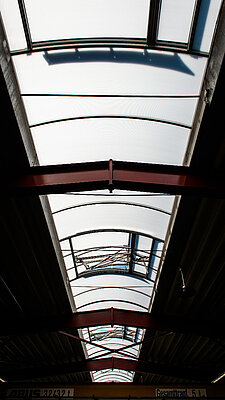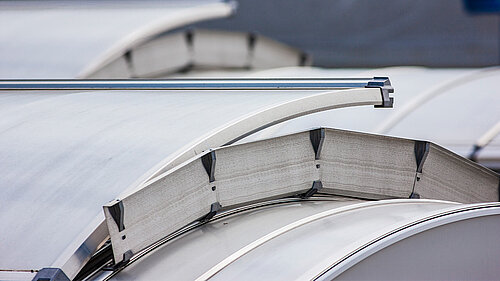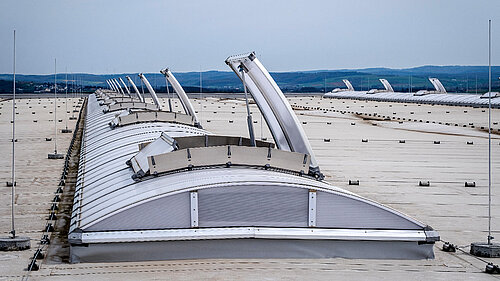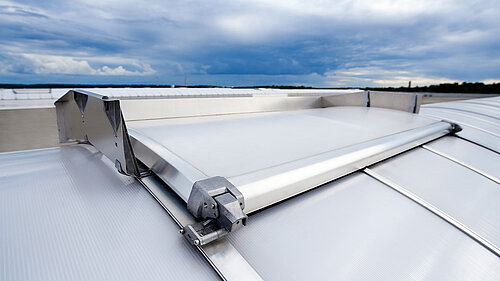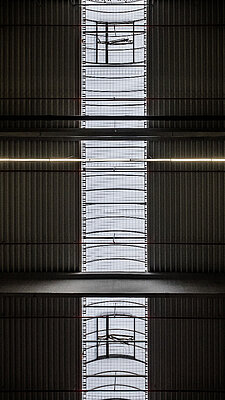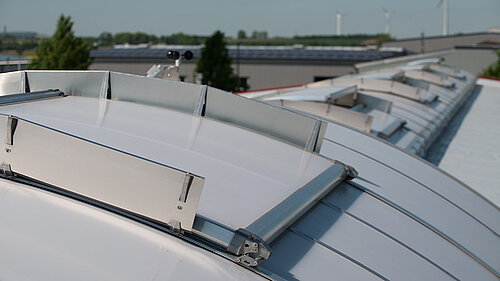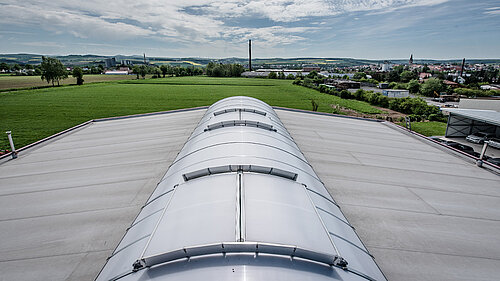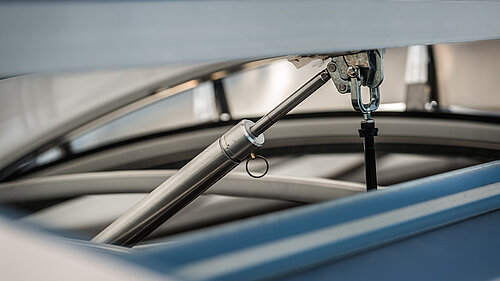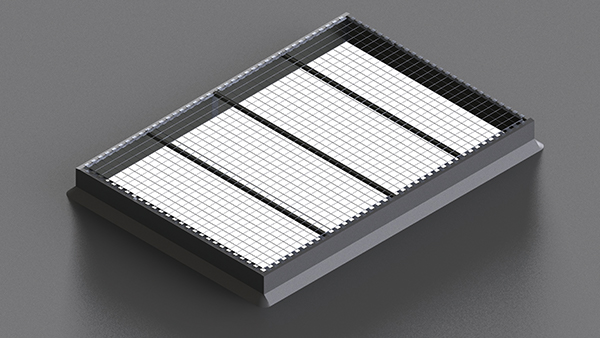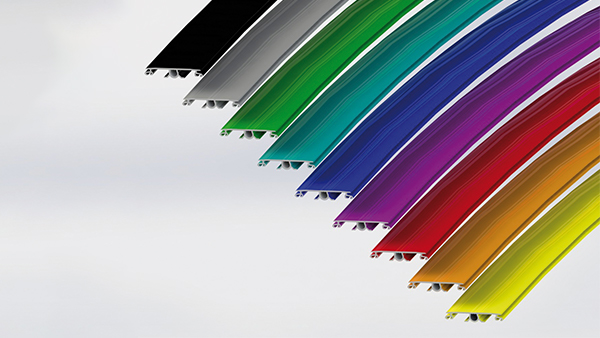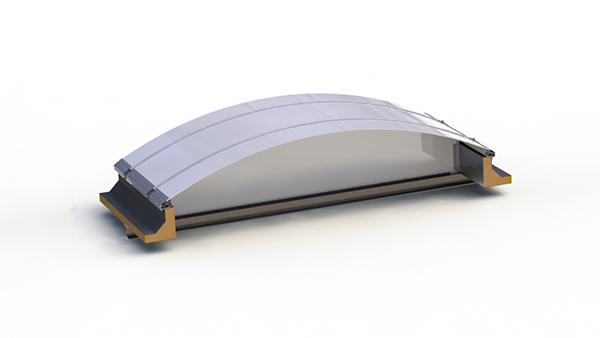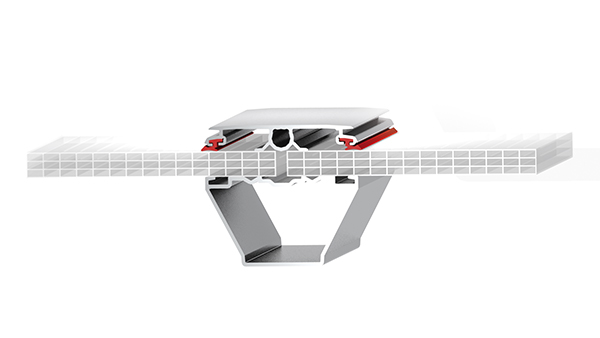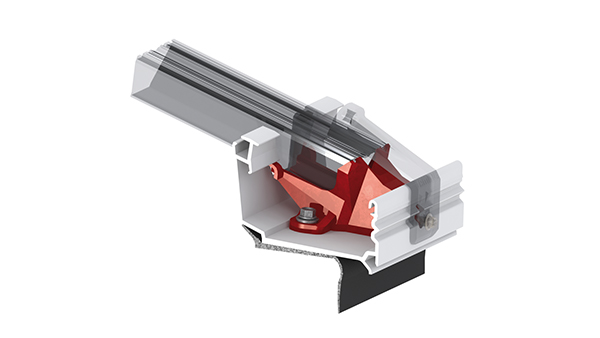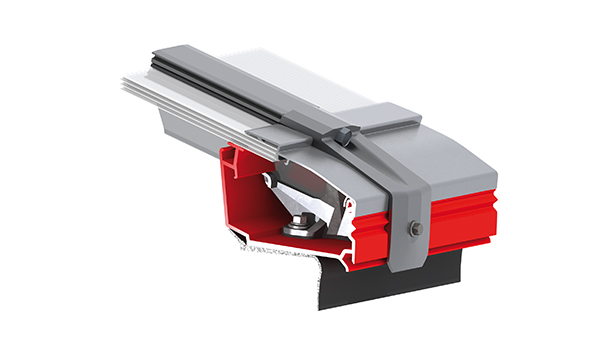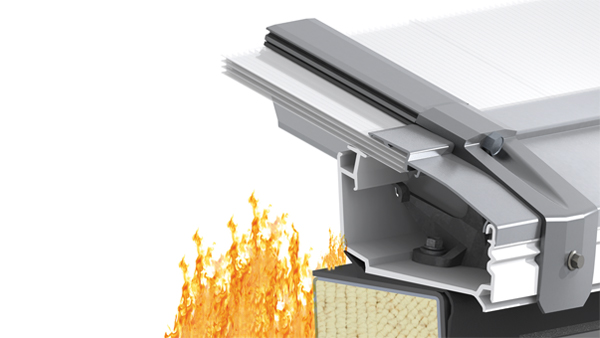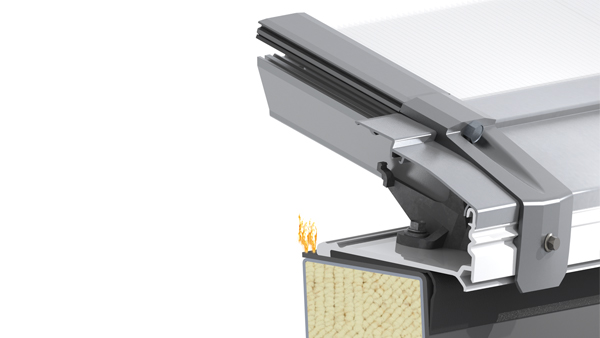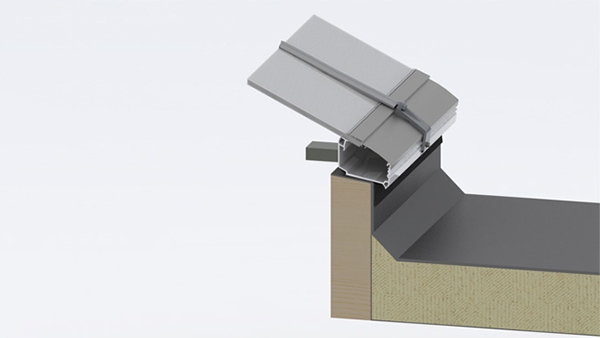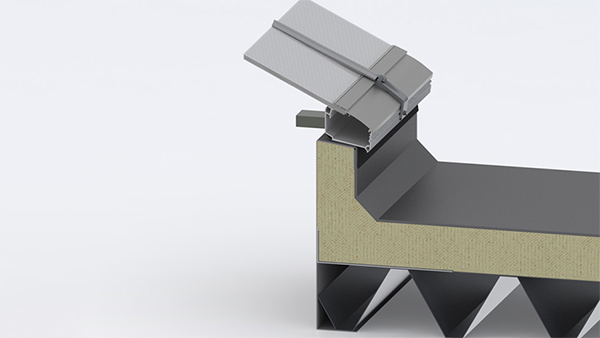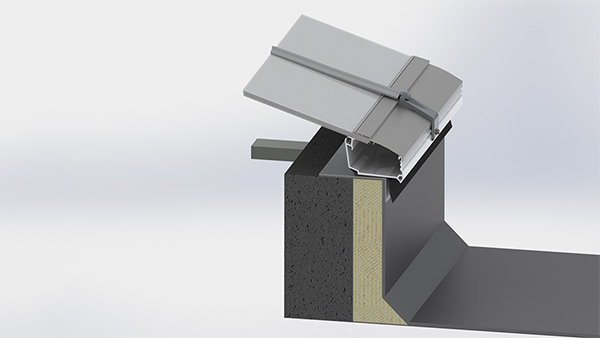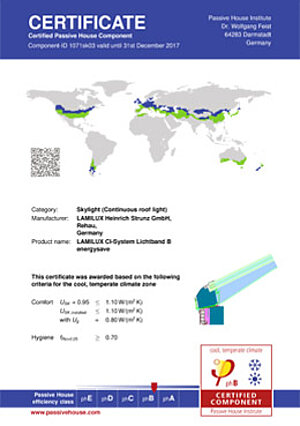LAMILUX Continuous Rooflight B Passivhaus
The world’s first passivhaus certified continuous rooflight
Benefits at a glance
Continuous Rooflight B Passivhaus
Certified energy efficiency
- The world’s first Passivhaus certified Continuous Rooflight system
- Passivhaus efficiency class – phB
- Heat transmission coefficient (USK): 0.95 W/(m²K)
- Overall system with flawless isothermal lines and free of thermal bridges
- Thermal performance values calculated based on DIN EN ISO 10077-1 and 10077-2
- Life cycle assessment made easy: There is a comprehensive Environmental Product Declaration for the Continuous Rooflight B Passivhaus in accordance with ISO 14025 and EN 15804 (EPD - modules A1 - D)
Stability and security
- The world’s first Continuous Rooflight with certified watertightness in heavy rain and during storms (DRI 3,0 m²/s)
- Based on European Technical Approval ETA-09-0374
- Complies with European standards regarding snow and wind loads
- Thermal protection properties tested in accordance with ETAG 010
- Watertightness tested in accordance with ETAG 010
- Burn-through safety verified in accordance with DIN 18234-3
- Melt-out verified in accordance with DIN 18230-1
- Permanent fall-through protection grid
Accessories
Continuous Rooflight B Passivhaus
Technical details
Continuous Rooflight B Passivhaus
Energy efficiency
Frame characteristic values
| Frame characteristic values | Frame width bf mm | Frame U value Uf W/(m² K) | Glass edge Ψ value Ψg | Temperature factor fRsi=0.25 [-] |
|---|---|---|---|---|
| Top (to) | 82 | 1.65 | -0.006 | 0.70 |
| Side (s) | 118 | 2.10 | -0.001 | 0.70 |
| Bottom (bo) | 82 | 1.65 | -0.006 | 0.70 |
| Mullion (m01) Butt joint glazing bar | 60 | 0.81 | 0.003 | 0.74 |
| Mullion (m02) Section glazing bar | 38 | 0.88 | 0.002 | 0.75 |
| Spacers: - | Secondary sealing: - | |||
Dynamic torque control – DTC
Effect: Integrated suspension beneath the glazing bar in the mounting frame (DTC spring) ensures that the glazing is perfectly tensioned. It is therefore secured in position by a specific holding force even when subjected to load.
Benefit: The glazing remains perfectly tensioned and secured in all situations, as any acting loads are optimally cushioned and absorbed by the mounting frame.
DTC – Protection in the event of heavy wind loads
- High stability of flaps – even in opened condition
- Even better anchorage for polycarbonate glazing
- Additional flap system protection due to spring-mounted, multiple-joint traverses
Active expansion absorber (AEA)
Effect: The Active Expansion Absorber compensates the tension and expansion which occurs when under loads. This is achieved through the continuous, shear-resistant connection between the seals and the cover strips.
Benefit: Optimal protection of the construction in the event of snow, ice, wind and excessive heat development.
AEA – Safety aspects in detail
- The glazing is watertight and is positively fitted to the cover strips and glazing bars.
- The cover strips have integrated guide rails for mounting fittings, sun protection devices and maintenance equipment.
- The clamp is made even safer through an extended adhesive area.
Isothermal load converter (ITL)
Effect: The Isothermal Load Converter channels the load on the Continuous Rooflight into the substructure. Since this frees the base profile from loads and tensions, there is no need for metal material. This allows high-quality composite with excellent thermal insulation values to be used for the base profile.
Benefit: The Isothermal Load Converter (ITL) achieves optimised isothermal lines running continuously through the construction and prevents thermal bridges.
ITL – Benefit for optimum energy efficiency
- Excellent Uf values in the base profile and even better thermal insulation
- Improved load bearing capacity in the base profile
- Significantly reduced risk of condensation
- Optimised rebate base ventilation
- Smooth interior with few edges which ensures less dirt and grime
Linear burn-through protection – LBP
LBP – Sophisticated fire protection technology
- Prevents fire from spreading onto the roof through roof penetrations in accordance with specifications in DIN 18232-4
- Patented technology
- No need to place gravel around the Continuous Rooflight
Effect: In most cases, the roofing membrane, which is attached to a substructure such as a frame, is pulled up to the upstand and is led under the base profile of the Continuous Rooflight. In the event of a fire inside the building, the roofing membrane on the inside of the upstand will often catch fire and will tend to burn like a “fuse” to the outside of the roof.
Linear Burn-through Protection (LBP) can be understood as an intelligent system, which restricts the spread of the fire at the roof penetrations. The profile of the Continuous Rooflight plays an important role: It is made of a thermoplastic composite which softens on the upstand in the event of high temperatures and spreads directly over the burring edge of the roofing membrane. This process seals the burning joints, cutting off the supply of oxygen and extinguishing the flames in this area.
Benefit: The LBP prevents flames from spreading to the roof. Despite it softening at high temperatures, the base profile remains stable during the fire because it is cooled and strengthened by the metal profile of the glazing bead.
Structural attachment
- Roof mounting variants include mounting on steel sheeting upstands, on wooden trusses or reinforced concrete upstand beams
- Stability is of primary concern with LAMILUXs’ own steel sheet upstands; LAMILUX complies with the requirements of the German Institute for Building Technology (Deutsches Institut für Bautechnik), according to which sheet steel upstands must be manufactured using high steel grades S 280 GD + Z 275 or S 320 GD + Z 275
- Connection details: Sandwich roof in accordance with IFBS guidelines
